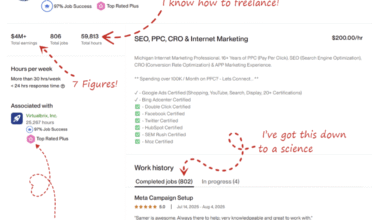
Looking for the best ways to get free money from the government? Getting free money from the government might sound too good to be true, but there are actually several ways you can receive financial assistance. From helping with monthly expenses to finding unclaimed funds, these programs and resources can be a big help. The…
Looking for the best ways to get free money from the government?
Getting free money from the government might sound too good to be true, but there are actually several ways you can receive financial assistance. From helping with monthly expenses to finding unclaimed funds, these programs and resources can be a big help. The key is knowing where to look and meeting eligibility requirements.
This article will show you different ways to get extra money from the government. Whether you need help with your bills or want to get back money that belongs to you, there are many options for you.
Best Ways To Get Free Money From the Government
Below are the best ways to get free money from the government – for housing, children, health insurance, food, and more.
1. Apply for unemployment benefits
If you lose your job, you might be eligible for unemployment benefits. These benefits can help you cover some of your expenses while you look for a new job.
To qualify, you usually need to have worked a certain amount of time in the past year. Each state has its own rules, so you should check your state’s specific requirements.
You can apply for unemployment benefits online or by phone, and be ready to provide details about your recent jobs and earnings. This will help determine how much you can get each week.
The benefit amount is based on a percentage of your earnings from your previous job. It can range from about 40% to 60% of your past earnings. This money can be a helpful bridge while you search for new work.
Each week, you’ll need to report if you’re still unemployed and looking for a job. Some states may also ask you to document your job search activities so it’s important to follow these rules to keep receiving benefits.
Unemployment benefits probably won’t cover all your expenses, but they can make a tough time a little easier. Remember to apply as soon as you lose your job to start getting support right away.
2. Check for child tax credits
Child tax credits can be a big help for families.
You might be able to get money back from the government if you have kids such as for childcare or for just having children. The amount you can get depends on your income and the number of kids you have.
The Child Tax Credit now gives up to $2,000 for each child.
Make sure you check if you qualify for these credits. You can find out more by visiting the IRS website or talking to a tax expert.
3. Women, Infants, and Children (WIC)
The Women, Infants, and Children (WIC) program helps pregnant women, new mothers, and young children get healthy foods. This program is a great way to get extra help when you need it the most, and this is free government money for low-income families. It’s focused on keeping you and your little ones healthy and well-fed.
If you’re pregnant, you can get help right away and continue to receive it for up to six months after giving birth. If you have children, they have to be under the age of 5.
To qualify, you need to meet income guidelines and show that you are at nutritional risk. This can include being underweight or having a diet low in essential nutrients. WIC then provides monthly benefits that can be used to buy specific foods like milk, eggs, and fruits.
To apply, you need to contact your state or local WIC office (you can start by Googling “WIC + your state name”). They will tell you what documents to bring and where to go for your appointment.


4. Use SNAP for food assistance
SNAP stands for Supplemental Nutrition Assistance Program. It’s a government program that helps low-income families buy healthy food. If you qualify, you get an EBT card loaded with funds every month.
Using SNAP is easy. You can use your EBT card at most grocery stores and it works just like a debit card.
To qualify for SNAP, you need to meet certain income and other eligibility requirements. These can include having a low income based on your household size.
SNAP can be a huge help if you’re struggling to afford groceries. It allows you to buy essential foods like fruits, vegetables, meats, and dairy products.
5. Free and reduced breakfast and lunch at school
Your child may be able to get free or reduced-price meals at school through several programs, and these programs make sure kids have healthy meals every day.
The most well-known program is the National School Lunch Program (NSLP). It provides low-cost or free lunches to millions of children in public and nonprofit private schools.
Schools many times also have the School Breakfast Program. This is similar to the lunch program but focuses on providing a nutritious morning meal.
In addition to these programs, there is the Special Milk Program. This program provides milk to children who do not participate in other meal programs.
Some schools offer the Community Eligibility Provision (CEP). This allows schools in high-need areas to serve breakfast and lunch at no cost.
To find out if your child is eligible, check with your school. They can guide you through the application process and let you know what your child qualifies for.
6. Seek Temporary Assistance for Needy Families (TANF)
Temporary Assistance for Needy Families (TANF) is a government program that can help you if you’re facing hard times. It provides financial aid to families with children who are struggling to make ends meet and can help with childcare, job training, and finding work.
To apply for TANF, you need to contact your local TANF office. They will help you through the application process and let you know what documents you need.
It’s important to know that each state runs its own TANF program, so the benefits and services might vary. Be sure to ask your local office (you can also reach out to the U.S. Department of Health and Human Services) what specific help they can offer.
7. Low-Income Home Energy Assistance Program (LIHEAP)
If you need help paying your energy bills, you might qualify for the Low-Income Home Energy Assistance Program (LIHEAP). This program helps low-income households with their heating and cooling costs.
LIHEAP provides federal funds to reduce energy costs. This can include help with your energy bills and dealing with energy crises.
You can also get help making your home more energy-efficient. This is known as weatherization and might include things like adding insulation or fixing drafty windows.


8. Early Intervention and Head Start
Early Intervention services are great for families with young children who have special needs. These services help kids from birth to age three. They offer things like speech therapy, occupational therapy, and more. Most services are free, and others have a sliding scale fee. They make sure your child gets the help they need, even if you can’t pay.
Head Start programs are for kids aged three to five. They help with early learning and development. Head Start also supports families with health and dental services.
Both Early Intervention and Head Start focus on getting kids ready for school. They help children learn and grow in important ways and also support families by connecting them to resources they may need.
You can usually self-refer your child to these programs (each state has its own), or ask your pediatrician for a referral.
9. Apply for college grants
College grants are a great way to get free money for school. Unlike loans, you don’t have to pay back grants. They can help cover your tuition, books, and other school expenses.
One of the most well-known grants is the Pell Grant. For the 2023-24 school year, the maximum Pell Grant is $7,395. This grant is for students with financial need.
Another option is the Federal Supplemental Educational Opportunity Grant (FSEOG). This is for students with exceptional financial need. The amount you can get depends on your school and your financial situation.
To apply for these grants, you’ll need to complete the Free Application for Federal Student Aid (FAFSA). The FAFSA helps the government determine how much aid you qualify for.
Many states and schools also offer their own grants. Check with your school’s financial aid office to see what you might be eligible for. It’s a good idea to apply for as many grants as you can.
Grants can make a big difference in paying for college, so it’s worth the effort to apply. Make sure to look for scholarships too!


10. Public Student Loan Forgiveness (PSLF) program
The Public Student Loan Forgiveness (PSLF) program can help if you work in public service. This includes jobs like teaching, nursing, firefighting, and more. If you work in these fields and have federal student loans, you may be able to get your remaining loan balance forgiven after ten years of payments.
To qualify, you must work full-time for a qualified government or nonprofit organization. You also need to make 120 qualifying monthly payments under a qualifying repayment plan. Only payments made after October 1, 2007, count toward the 120 payments required.
The program mainly benefits people who work in low-paying, but important, public service jobs. It’s a way to give back while also getting financial relief. Though the application process can be long and require careful tracking, many find the effort worth it when their loans are wiped out.
11. Claim Earned Income Tax Credit (EITC)
The Earned Income Tax Credit (EITC) gives low- to moderate-income workers and families a tax break.
If your income is under a certain amount, you might qualify. This credit can either reduce the taxes you owe or increase your refund. For 2024, the EITC amounts can go up to $3,995, based on your income and family size.
To claim the EITC, you need to file a tax return, even if you do not owe any taxes. You should fill out Form 1040 and a Schedule EIC if you have qualifying children.
12. Get housing vouchers
Housing vouchers are a great way to get help with rent. They are commonly known as Section 8. These vouchers help low-income families, seniors, and people with disabilities afford safe and decent housing.
To get a voucher, your income must be below a certain level and this varies by location and family size.
With a voucher, you can choose any housing that meets program requirements. This gives you some freedom to pick a home that suits your needs best. The government will pay part of the rent, making it more affordable for you.
13. See if you qualify for down payment assistance
Buying a home can be tough, especially when it comes to saving for a down payment. That’s where down payment assistance programs can help prospective homeowners.
These programs come in many forms. You might find grants, loans, or other types of aid to help you with the down payment. Each state offers different programs and some are more generous than others.
To qualify, you’ll need to meet certain requirements. These can include income limits or being a first-time homebuyer.
14. Apply for Supplemental Security Income (SSI)
Supplemental Security Income (SSI) is a program that gives monthly payments to people who are disabled, blind, or over 65 and have limited income. You may get help with food, rent, and medical bills.
To apply for SSI, visit the Social Security Administration (SSA) website. There, you can find the application forms and details about the process. You may need to provide information about your finances and living situation.
The application can be done online, by phone, or in person. If you’re under 18 or applying for someone under 18, there are special forms for children.


15. Look for health insurance in the marketplace
We all know that health insurance can be very expensive. Before you skip it, I highly recommend comparing pricing of health insurance on the Health Insurance Marketplace to see if you can find something more affordable for you and your family.
It’s a great way to get coverage and possibly save money. Sometimes, if you qualify, you can get free or low-cost health insurance plans.
Go to Healthcare.gov to start, and each state has its own Marketplace, so follow the specific steps for your state. It can be a little confusing, so make sure you have no distractions and can spend some time doing this.
During the open enrollment period, you can choose a new plan or keep your current one. If you’ve had a big life event, like losing your job, you might qualify to sign up outside the usual enrollment times.
16. Medicaid
Medicaid is a state and federal program that helps people with low incomes get health care. If you qualify, you can receive free or low-cost medical services, like doctor visits, hospital stays, and even prescription drugs.
Medicaid is especially helpful for families, pregnant women, seniors, and people with disabilities.
One of the best parts is that Medicaid covers a wide range of services – you can get help with dental care, mental health services, and even long-term care.
Your income and family size usually determine if you can get Medicaid.
17. Search for unclaimed money
You might have unclaimed money waiting for you. This money comes from many sources like unpaid wages, forgotten bank accounts, or unclaimed insurance benefits.
You can check by going to unclaimed.org, the website managed by the National Association of Unclaimed Property Administrators (NAUPA).
Each state has its own database for unclaimed property. Check your state’s website to see if there is money owed to you.
Frequently Asked Questions
There are several ways you can get money from the government to help with different needs, like paying for food or getting extra support if you don’t make a lot of money.
What ways can I get money from the government?
There are many ways to get free government money. You can apply for unemployment benefits if you lose your job. Families can also check for child tax credits, which give extra money for children. Programs like WIC and SNAP can help with paying for food, and students can get free and reduced breakfast and lunch at school.
How can I get help from the government if I don’t make a lot of money?
Low-income families can use programs like WIC (Women, Infants, and Children), SNAP (Supplemental Nutrition Assistance Program), TANF (Temporary Assistance for Needy Families), LIHEAP (Low-Income Home Energy Assistance Program), and more to get help from the government if they don’t make a lot of money.
How can I borrow money from the government?
The government offers student loans for education through programs like FAFSA. Small businesses can apply for loans from the Small Business Administration (SBA). There are also some loan programs based on specific needs like starting a farm or buying a home.
What is FAFSA?
FAFSA stands for Free Application for Federal Student Aid. It’s a form that students fill out to get financial aid for college. It can help you get grants, loans, and work-study opportunities to pay for your education.
Can I borrow money from my social security benefits?
No, you cannot borrow money from your Social Security benefits. Social Security is designed to provide income during retirement or if you become disabled, so it’s not a source of loans or advance cash.
Is there free grant money for bills and personal use?
Yes, there can be grants for specific needs like paying utility bills or home repairs. You might also find grants for education, food, and health care. Check with local and federal agencies to see if you qualify for any of these grants.
How do I find out if I qualify for any government assistance?
You can visit government websites or contact local agencies. Many state and local governments have online tools to check your eligibility. It’s also helpful to reach out to community organizations that can guide you through the application process.
How To Get Free Money From the Government – Summary
I hope you enjoyed this article on the best ways to get free money from the government.
There are many ways to get free money from the government, such as for housing, to help pay for your children’s expenses, to afford health insurance, to buy food, and more.
Note: There may be changes or updates to the free government programs above. I recommend contacting the program to learn more. Also, please be sure to stay safe with your sensitive information and only use official websites (look for .gov websites and official government organization websites to start with to avoid scams).
What do you think of these free government programs? Have you ever used any of the ways above to get free money from the government?
Recommended reading:





